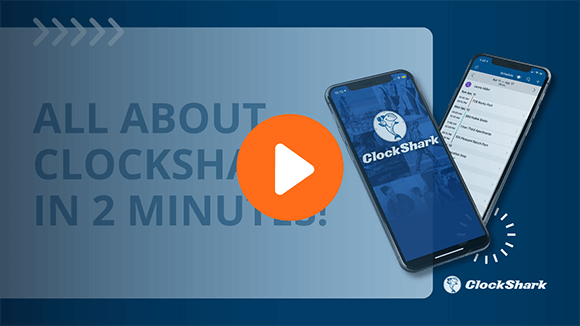Facial recognition technology is grabbing attention by solving old problems and sparking discussions. On construction sites, these cameras boost security by monitoring who comes and goes, making payroll easier with precise attendance tracking. However, there are ethical concerns, like privacy issues and biases in the system, especially in diverse trades. Trade businesses must proceed carefully, balancing innovation with ethics. So, let’s dive in!
What is Facial Recognition, and How Does it Work?
Facial recognition tech works by analyzing what makes your face unique – your "faceprint," if you will. It uses algorithms to scan and measure the size of your eyes, the length of your jaw, or the width of your nose. These features stay pretty consistent over time, so even if you get a haircut or grow a beard, the tech can still pick you out of a crowd.
This technology has come a long way. The National Institute of Standards and Technology says the benefits of facial recognition are real - the software has gotten way better at finding matches in databases. We're talking about a twentyfold improvement between 2014 and 2018. If you’ve grown up watching the likes of The Terminator and Blade Runner, you’ve probably grown up thinking it’s futuristic technology. Well, the future is now. It's real, and it's getting smarter by the day.
Benefits of Facial Recognition for Companies
Facial recognition tech can do a lot for your business - ramping up efficiency, beefing up security, and giving customers top-notch experiences.
Enhanced Public Safety and Law Enforcement
Facial recognition is a digital watchdog for the construction industry's safety and security needs. It acts as a virtual detective with the ability to identify individuals in busy job sites or surveillance footage. This technology aids authorities in promptly addressing security threats, apprehending wrongdoers, and even locating missing workers. It's a game-changer in crime-solving and upholding the safety of construction sites and surrounding communities.
Streamlining Identity Verification Processes
Integrating the benefits of facial recognition into identity verification processes is like giving traditional methods a much-needed renovation. No more fumbling with passwords or digging for IDs; with a simple facial scan, individuals can breeze through authentication procedures, whether it's gaining access to restricted construction zones or logging hours on-site. It's all about streamlining transactions, reducing hassle, and enhancing the overall user experience for construction workers and stakeholders.
Facilitating User Authentication in Digital Platforms
In project management, facial recognition is the latest way to verify identity. Workers can now access platforms and software with a quick facial scan, ditching the hassle of traditional logins. This isn't just about convenience; it strengthens cybersecurity and makes online work smoother for construction pros on different digital platforms.
Improving Accessibility for the Disabled
Facial recognition tech in project management goes beyond convenience; it promotes inclusivity and accessibility on job sites. By including the benefits of facial recognition in assistive tools, workers with disabilities can better use digital interfaces, access safety info, and join training programs. It's about creating a more inclusive environment in construction so everyone can play their part in project success.
Cons of Facial Recognition
Despite its many pluses, facial recognition tech also comes with its fair share of worries and hurdles, calling for some serious attention and rules to keep things in check.
Risks of Mass Surveillance and Privacy Erosion
In construction, using facial recognition could lead to mass surveillance worries. Workers might feel uncomfortable with constant monitoring on job sites. Storing large amounts of facial data also raises privacy concerns, risking unauthorized access and misuse.
Potential for Racial and Gender Bias in Technology
Facial recognition tech can misidentify workers from marginalized groups due to biases in the system - in short, the companies training this technology may not use a diverse enough sample of humans to model their technology on. Even though facial recognition is meant to spot individual workers on the job, there's a hitch: the tech might not work the same for everyone, especially based on gender or race. That means workers who don't fit the mold the technology was trained on might get misidentified or have trouble getting through the system. And that could make things even tougher for those already facing challenges in the construction industry.
Ethical Concerns Around Consent and Use
There are ethical questions about using facial recognition in construction. Should companies be allowed to use it without permission? How will facial data be used? Clear rules are needed to protect workers' rights and choices.
Increased Risk of Identity Theft and Cybersecurity Threats
Using facial recognition in construction brings new cybersecurity risks, like identity theft and hacking. Depending on biometric data for security opens up opportunities for cybercriminals to exploit. Strong cybersecurity measures are crucial to keep sensitive information safe.
Dependence on Technology and Loss of Human Interaction
The benefits of facial recognition software in construction could lead to reliance on the technology, reducing human interaction. This might affect collaboration and decision-making skills. Balancing technology with human engagement is essential for effective teamwork on construction sites.
Save Time and Money with ClockShark
Technical Limitations and False Positives
Despite all the benefits of facial recognition software, there are still some big hurdles to clear. These systems can still mess up, giving false positives or getting things wrong because of things like unusual lighting or different facial expressions. That's why we need to keep working on improving these algorithms, doing more research, and fine-tuning things to make sure they're as accurate and fair as possible.
Apps and Tools for Facial Recognition
Despite all the cons we’ve listed, we still think facial recognition technology has a real place on the job. Facial recognition technology isn't just for the big players – it's got some handy applications for tradespeople like construction workers, electricians, and plumbers, too. Let's check out how some popular facial recognition apps can lend a hand on the job.
Microsoft Face API
Leverage Microsoft Face API to integrate facial recognition into your own apps for various purposes. For instance, construction companies can develop apps to track employee attendance and manage the workforce using facial recognition for clocking in and out. Tradespeople can use apps powered by Microsoft Face API for client verification, ensuring that only authorized individuals have access to their services.
AppLock – Fingerprint & Password, Gallery Locker
This security app can be handy for tradespeople who store sensitive information or documents related to their work on their devices. Tradespeople, for example, can lock their project management apps or client communication tools using facial recognition provided by AppLock, ensuring that confidential information remains secure.
BioID
BioID offers secure biometric authentication, which can be particularly useful for tradespeople accessing sensitive data or systems. Tradespeople could use BioID to log into specialized apps or systems that control access to equipment or manage inventory, ensuring that only authorized personnel can perform certain tasks.
FaceLock
FaceLock adds an extra layer of security to tradespeople's devices and apps by using facial recognition for app locking. Tradespeople can ensure that their project management apps, communication tools, or even device settings are protected from unauthorized access, safeguarding sensitive information and preventing tampering.
ClockShark's Kiosk Clock
ClockShark's Kiosk Clock offers a streamlined solution for tracking your entire crew's time from a single device, integrating facial recognition and individual PINs for accurate payroll management. With easy setup and no more buddy punching, you can ensure precise payroll calculations every time without the hassle. Trusted by thousands of companies worldwide, ClockShark's Kiosk Clock replaces clunky time clocks with a convenient app accessible from any smartphone or tablet. Employees can clock in and out, switch tasks, and take breaks with a simple tap, while facial recognition technology eliminates the risk of buddy punching. Plus, real-time syncing of employee hours to jobs and tasks enables more accurate job costing, helping you stay within budget and improve project management efficiency. Get started for free with no credit card required, and see how ClockShark's Kiosk Clock can revolutionize your crew's time tracking process.
These apps might not be your typical toolbox staples, but they're sure to make your life a whole lot easier in the trade world. Whether you're managing a crew or tracking progress on a project, facial recognition tech has got your back.
Navigating the Complexities of Facial Recognition in the Digital Age
The benefits of facial recognition tech are everywhere these days, bringing both good and challenges to the table in our digital world. Sure, it amps up security, streamlines operations, and tailors experiences like never before. But we can't ignore the big worries about privacy, biases, and ethics that come with it. As businesses and lawmakers grapple with this tech, we need to strike a balance.





